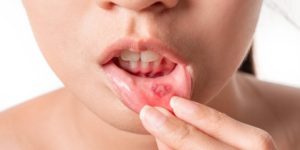As a man, if you see small bumps appearing around the head of the penis, it might be time to see the doctor if they’re pearly penile papules (PPP). Some symptoms to look out for are generally rounded or finger-like growths. In most cases, the bumps are a harmless skin condition in males, and you might not notice them.
However, while PPP is a benign skin issue, it can be confused with genital warts because of the similarity in appearance. Thus, to avoid anxiety and distress, it’d be best to get a proper diagnosis from a certified medical practitioner such as a dermatologist. With that said, here’s how you can seek treatment for PPP:
1. Get A Proper Diagnosis
The first step is getting a proper diagnosis to eliminate any doubts or anxiety you might have about your condition. You can visit a dermatologist or urologist to get the correct diagnosis. A wrong diagnosis can have added costs beyond direct treatment, which can be expensive, especially if your insurance coverage doesn’t cover it.
Once you’re sure you have PPP, you can start the treatment process. However, treatment is optional because the condition is benign and generally harmless. Ideally, PPP regresses as you age; thus, treatment isn’t necessary. Nonetheless, you can get treated if the condition interferes with your personal life and causes embarrassment.

2. Find The Right Medical Specialist
Once you have a confirmed diagnosis of PPP, the next step should be finding the right medical specialist to treat you. A PPP can be treated by either a urologist or a dermatologist. You can research the best dermatologists and urologists in your area.
You can find a good dermatologist or urologist through recommendations from family and friends. You can also visit medical facilities for consultation and to find the best medical practitioner to help with treatment for your condition. Once you find a dermatologist or urologist to treat your PPP, they can discuss the available treatment options.
4. Choose A Treatment Option
There are several treatment options for PPP that your doctor would recommend. Before settling on your preferred choice, you can discuss each option’s treatment process and implications. Your doctor can also advise you on the best treatment option for you.
A convenient and cost-efficient treatment method is purchasing a PPP kit that you can use at home. It uses an electrical ionizer to vaporize the papules. You can do this quickly at home, provided you have some privacy. Besides that, here are some more treatment options for PPP:
5. Cryotherapy
It is one way of treating PPP. In this treatment, the doctor applies the liquid nitrogen to the lesions to freeze and remove them. You could opt for this form of therapy because it’s minimally invasive. It means that it doesn’t involve any form of open surgery. During the procedure, the doctor removes all the damaged tissue.
This treatment is highly effective, and studies have shown that up to 80% of the lesions from PPP can be removed without complications. In addition, you shouldn’t experience any pigmentation once the procedure is done. Once you’ve finished the procedure, the recovery should be quick and with little pain.
If you experience any pain or complications after the cryotherapy procedure, it’d be best to talk to your doctor. The doctor may prescribe painkillers if the pain causes discomfort during recovery.
6. Laser Treatment
Another form of treating PPP is laser treatment. During a laser treatment, the doctor uses a highly focused beam of light to remove the layers of the damaged tissue. Once the lesions are vaporized, the laser beam enhances the development of new collagen fibers to create new skin that’s smooth and firmer.
There are two forms of laser treatment, namely:
- Carbon Dioxide (CO2) laser treatment: It treats benign skin conditions like PPP. During the treatment procedure, the doctor will use short pulsed light energy or a continuous light beam that is precisely focused on the lesions. The rays remove thin layers of the damaged skin and cause minimal heat damage to the surrounding skin. If you receive this treatment, the healing process can take two weeks.
- Erbium laser resurfacing: This is the best laser option for you if you have a darker skin complexion. During the procedure, the doctor can issue you with local anesthesia. Further, it causes less injury to the surrounding area and little swelling and bruising. Moreover, the recovery process is quicker than that of a CO2 laser.
Ideally, you can receive laser treatment as an outpatient, and there’s no need to be admitted unless your doctor deems it necessary.
- Electrodessication And Curettage
This procedure involves using electricity to burn and then scrape off the lesions. It is generally safe, and you don’t have to worry about damage to the surrounding skin. The doctor uses controlled amounts of electricity to burn off the lesions, and you’ll be sedated to ensure comfort.
Conclusion
PPP is a common skin condition for males around the base of the penis tip. While you might be concerned that it could be a form of a sexually transmitted disease, it’s not, and you can be tested to be sure. It’s not necessary to treat PPP because the lesions disappear by themselves after some time. However, if the condition makes you uncomfortable, especially regarding sex, you can consult a dermatologist for treatment options. If you opt for treatment, ensure you’ve discussed all implications with your doctor.



